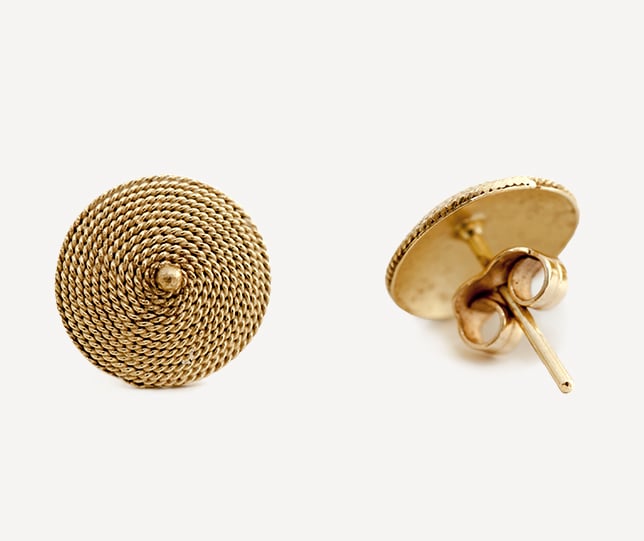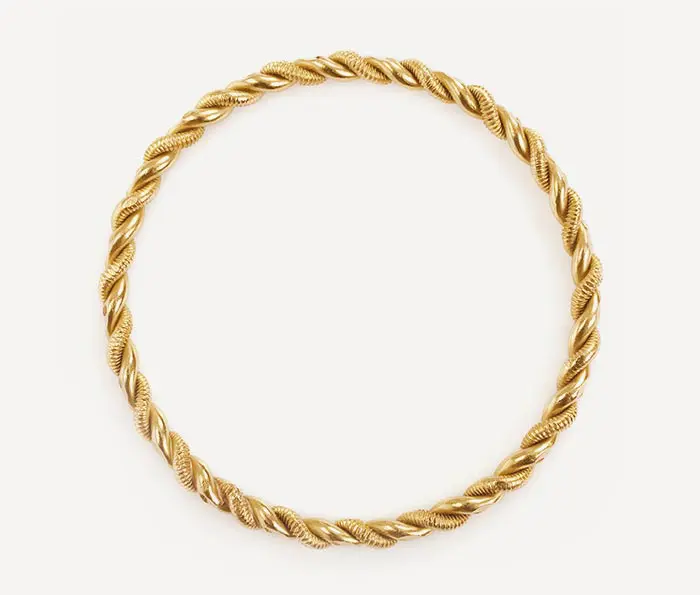
Almost 50 years ago, Muthuvel Ayyavoo, a young lad from Selam, arrived in Chennai (then Madras) in search of work and to earn a living. Financial constraints were such that he discontinued studying for his BA degree. Someone suggested he approach Mr Surendra Mehta of Bapalal & Co. in Ratan Bazaar, Georgetown.
Having been with the company since even before the current management, we know Ayyavoo is full of knowledge and experience. Now in his 50th year with the company, we thought we’d have a conversation with him to record his memories and points of view of how Mehta Jewellery has evolved into what it is today.
How and when did you join the Mehtas?
In March 1974, I met Surubhai (Surendra Mehta) to ask for a job at the recommendation of an acquaintance. I had dropped out of college due to financial need and had no work experience. He, Haribhai and Tushaarbhai interviewed me together. They gave me my appointment letter, and I joined work the next day, 21 March 1974.What was significant about your meeting with them?
When I entered the showroom in Ratan Bazaar, I saw a gold chain on the floor. I bent down and picked it up. I met Surubhai, introduced myself and handed over the gold chain to him. I said the chain did not belong to me; I found it lying on the floor near the door.In those days, a new employee had to pay a refundable security deposit of 5,000/-. They waived it because I said I did not have the money, but we agreed that a certain sum could be deducted from my monthly salary.
A memory you would like to share
During my first week on the job, Haribhai noticed I was still in the showroom during the lunch break. He asked me if I had eaten my lunch. I replied I had no money to pay for lunch. He opened his drawer and took out an amount over my monthly salary. He sent me to a local store with instructions to buy a stove, pans, utensils, and provisions to cook my food. I told him I did not know how to cook. He told me I would learn with practice. The next day, Tushaarbhai asked to see what I had brought for lunch. He was shocked at the contents of my lunch box. He brought me a bag of healthy dry food from his home that lasted me for many days. During this time, my cooking improved.What was the first order you took?
A diamond addigai for Mrs S, who I have attended to many times. I remember it was to be set with 258 diamonds. I wrote the order at least 5 or 6 times before I could spell “addigai” correctly. Haribhai was watching me. After completing the order, he gave me a book with pictures of jewellery and the names of different items. I am proud that I learnt quickly.

Tell me about something that made you proud of your work.
My interactions were mainly with Surubhai, who handled diamonds; Haribhai and Tushaarbhai, who took care of gold and manufacturing; and Sureshbhai, who was in charge of coloured gemstones. He trained Tushaarbhai to take over his work. When I joined the Mehtas at Ratan Bazaar, Haribhai was already ill with throat cancer. He had had a tracheostomy and could barely speak. He would communicate with us through written notes.
I am most proud that I worked hard and with sincerity that by the end of my first year, the management would ask me to attend to most of our regular and prominent customers. Many of them still ask for me when they come to the showroom. I am proud that they trusted me with their customers and high-value items. I knew I was handling valuable items—gold and precious gems.
Perhaps my proudest moment was when Haribhai awarded me an 8-gram gold coin a year after I began working with the company. In a staff meeting, Tushaarbhai said it rewarded my hard work and sincerity.
What helped you to learn and improve?
Tushaarbhai started me with a diary. He taught me to note the details of orders and follow up on them regularly. I follow this practice even today. When I expressed an interest, Haribhai and Tushaarbhai arranged for me to attend the workshop for a while in the afternoon each day. I gained hands-on experience making jewellery—thodu, chains, bangles, etc. I learnt about coloured gemstones from Sureshbhai.
My knowledge of diamonds is thanks to Surubhai. We had a cutting and polishing unit on the premises in those days. I spent time watching the work there. Even then, I wore thick spectacles, so Surubhai told me to watch closely but not try my hand with the diamonds and the machines.
Bapalal and Company Jewellers was formed in 1987, and Mehta Jewellery in 1992. Haribhai had passed on by the time BCJ was started.
The transition was natural for me. While I knew and respected all the family members in the management, I felt most closely associated with Surubhai, Sureshbhai, and Tushaarbhai and later with Abhaybhai, the youngest, who joined the business in 1981. Today, Abhaybhai’s son, Akshay, represents the 4th generation in the company.
Many things have changed since the time I joined the company. The scale of operations has changed. Fashions have changed, and so have customers’ tastes. Manufacturing methods have evolved. Colleagues have moved on, retired, or passed away. Haribhai, Surubhai and Tushaarbhai are no longer with us.
Trends you have witnessed
Until the 1980s, customers considered jewellery for both ornamentation and investment. They looked for quality, beauty, and value. The artist rendered the design, which was shown to the customer for approval. If the design required diamonds, Surubhai and, later, Abhaybhai chose them. Sureshbhai and Tushaarbhai picked the coloured gemstones. The piece would be manufactured in our workshop. At that time, every piece of jewellery was handcrafted and meticulously checked, so the customer was completely satisfied with what she received.
The Gold Control Act required jewellers to own a licence to hold gold, limiting the quantity of manufactured jewellery. The number of well-known jewellers was fewer than it is today. Quality was more important than quantity—22-karat was the preferred purity for gold, and customers were willing to pay for top-quality diamonds.
With the end of the Gold Control Act and licensing, more jewellery outlets opened, and mass-produced items were available more quickly. While young people today purchase a lot of readymade jewellery and are not too particular about quality, I see several young customers today who want gold and diamond jewellery in classic designs made in 22k gold. Of course, with the rising price of gold, it makes sense to use 18k and 14k gold.
Our customers, even then, were mainly from Tamil Nadu, Andhra Pradesh, and Karnataka. They regarded us for the purity of our gold jewellery, the quality of our diamonds and gemstones, and the fact that we always meet their expectations.
What made you continue to work at Mehta Jewellery?
I never considered working anywhere else because there was no need to. I was satisfied with my job, and the management always gave me help and support. But the point is the trust and respect I receive here.
Before he passed away, Haribhai had written me a note; he could barely speak by then. He told me never to leave the company. Tushaarbhai was perhaps my most substantial connection to Mehta jewellery. For me, the most brutal blow was Tushaarbhai’s sudden passing. It was so sudden and a rude shock for all of us. I could discuss anything with him; I learnt so much from him. He was like an elder brother. I grieved more for him than for any member of my own family.
When I considered retiring, Abhaybhai made me stay on by limiting the hours and number of days I worked. I also like that he calls me in when particular customers I have dealt with want to visit the showroom. I feel valued.
My connection is not only with the company, but also to the family. I received several offers from other jewellery companies in the city, but I was happy where I was and felt no need to leave the Mehtas.










